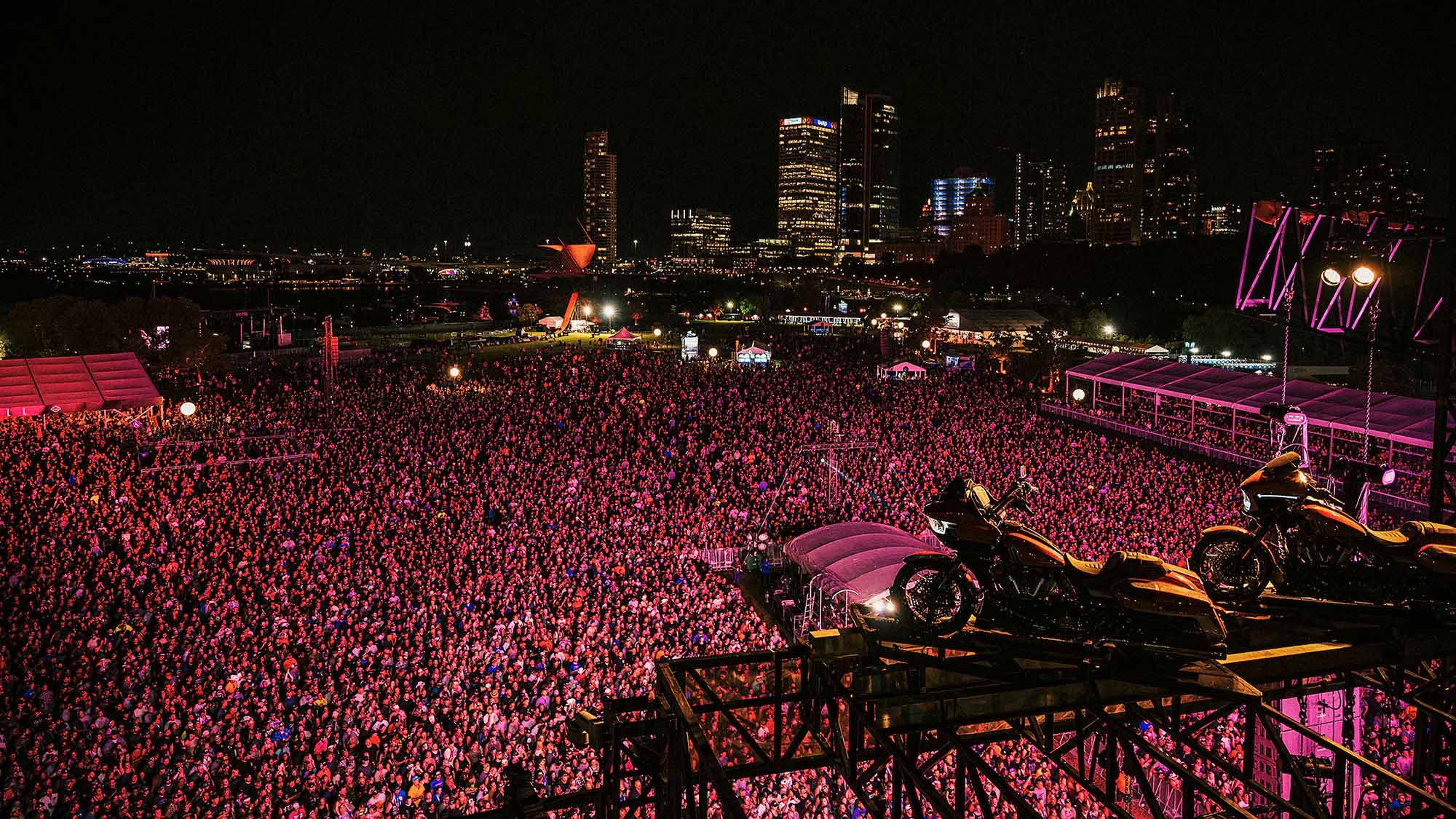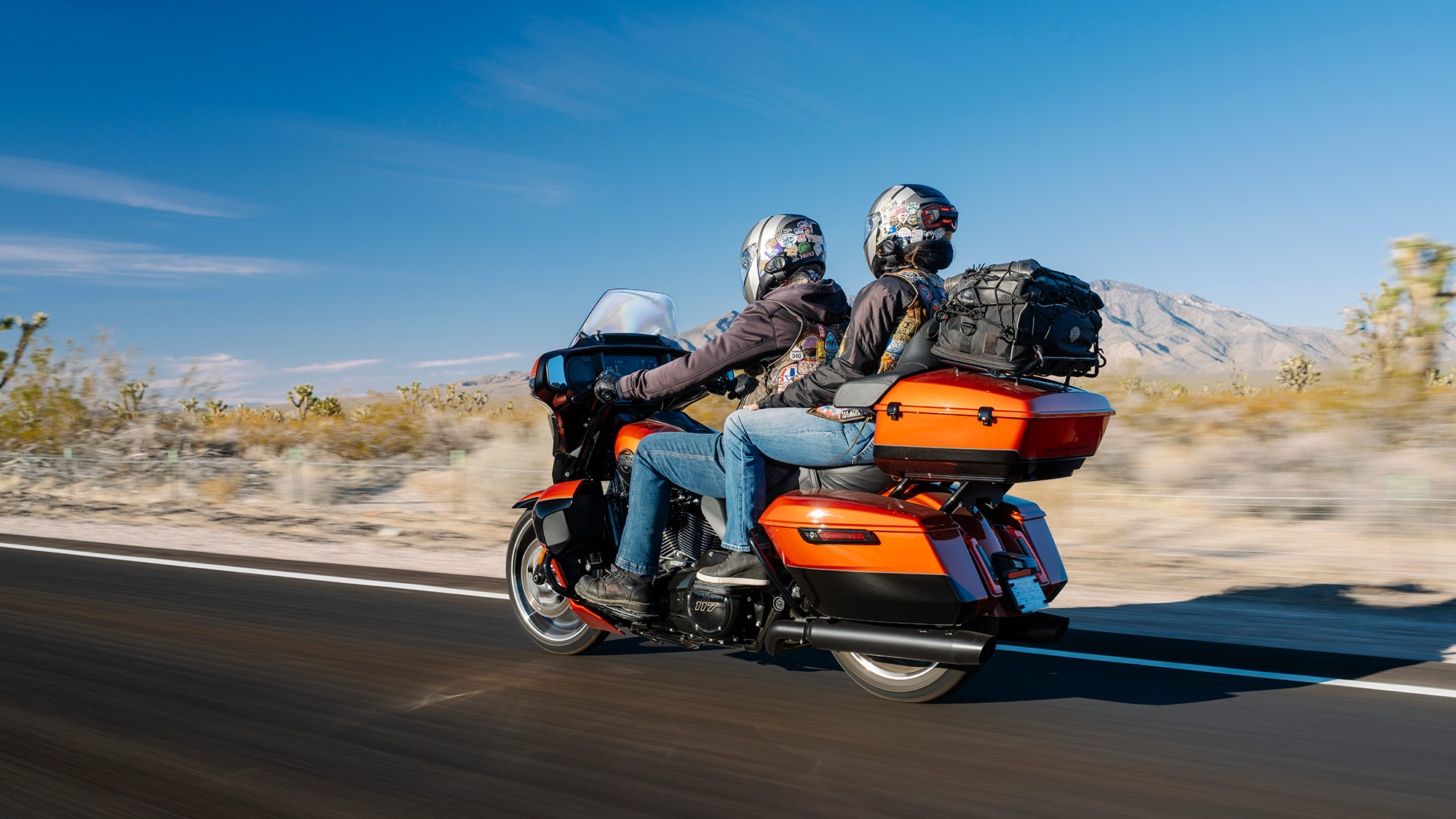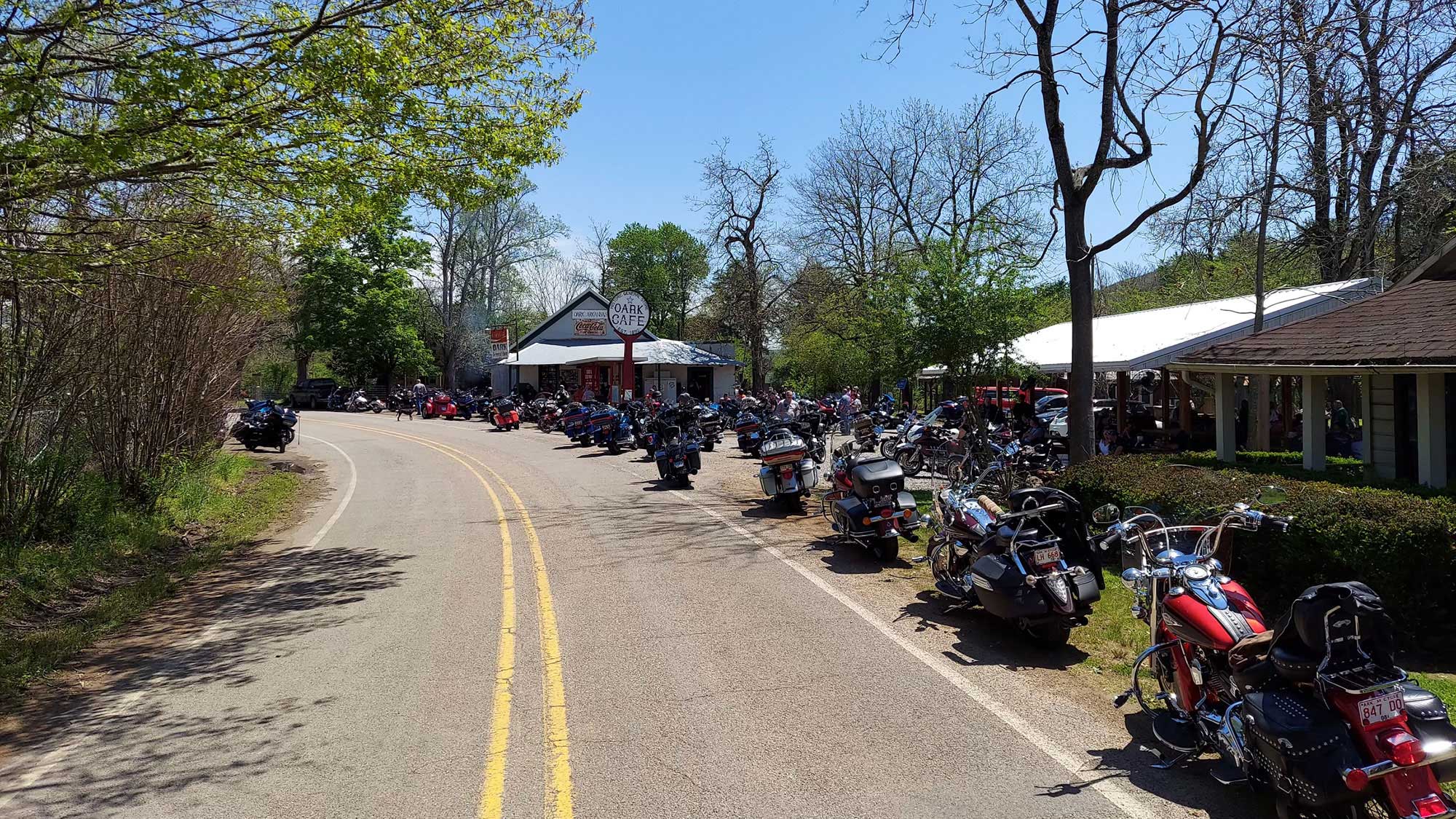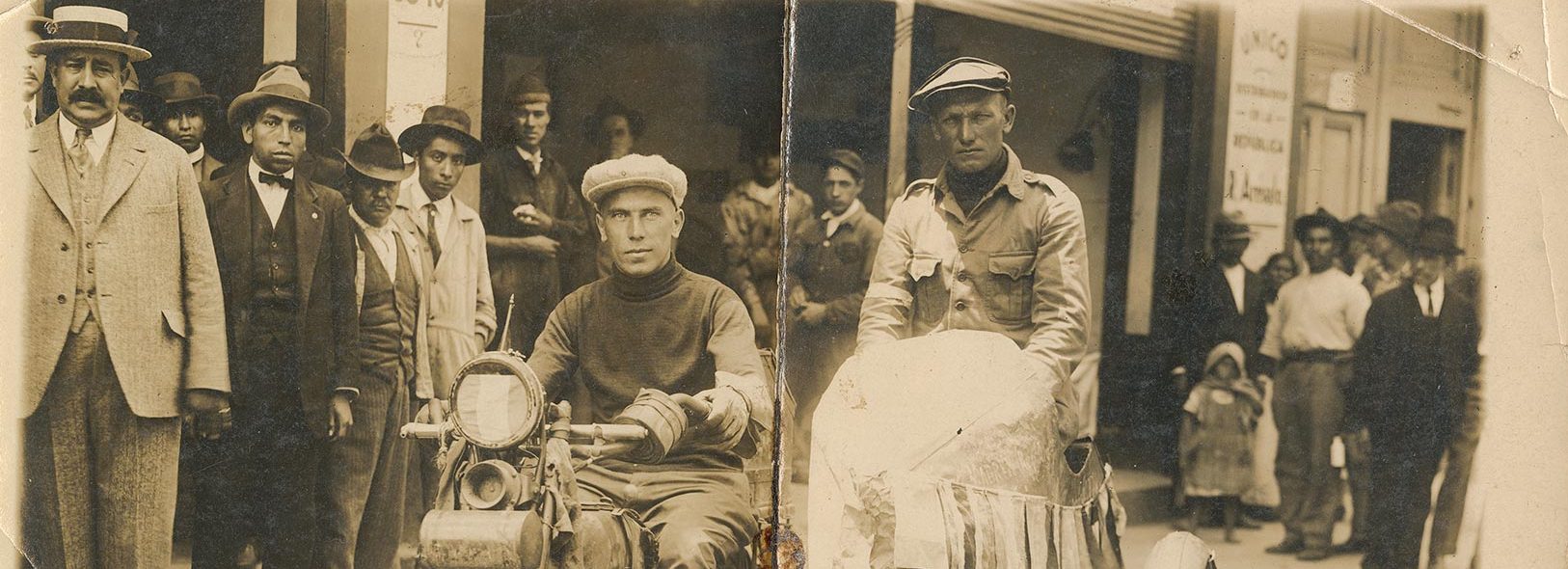
A Crazy Adventure!
In 1925, two intrepid travelers set out on a pan-American adventure with a brand-new Harley-Davidson® motorcycle and sidecar. The goal was to reach New York City—their starting point was southern Argentina.
In 2024, the Harley-Davidson Archives became custodians of a stunning piece of history: Alexander Braun’s handwritten notes and collected papers from his 1925 motorcycle trip with companion Gottleib Schick from southern Argentina to the U.S. border. While many epic rides can be found in the pages of The Enthusiast and among the papers held in the H-D archives, a journal account of such a large undertaking is rare—even more so when you consider it happened 100 years ago.
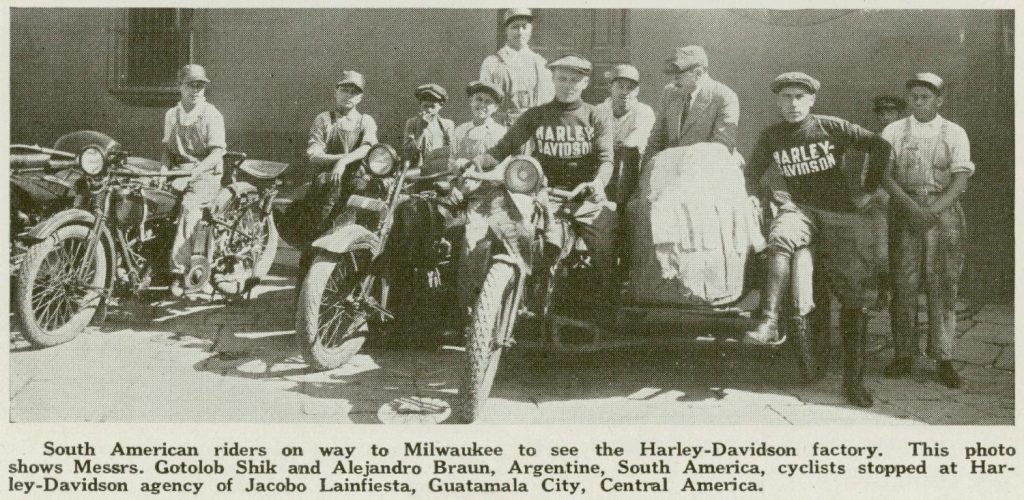
The journal was gifted to the Harley-Davidson Museum® courtesy of Marta Estela Braun/Maria Elena Braun, the family of Alexander Braun. The journal, written in Spanish, was roughly translated by the donors, and that translation was used by the Museum to bring this summary to you.
Alexander Braun and Gottleib Schick worked as mechanics for the railroad. Daydreaming of getting away, the duo hatched a plan for a journey through the Americas, with the hope of making it all the way to New York City. Braun had learned to ride motorcycles in Austria (he moved to Argentina in 1922), and he thought it would be a good vehicle for the trip.
They ordered a 1925 model Harley-Davidson from Buenos Aires and spent two months preparing for the journey. They packed gas, oil, grease, and spare parts for the motorcycle. They added a crate to the sidecar to carry clothing, wool ponchos, a tent, sheepskins, ropes, a shovel, binoculars, and a compass, as well as a canvas bag to carry drinking water.
With much local fanfare, the pair set out from Puerta Madryn, Argentina, on Sunday, May 17, 1925. They traveled northeast towards Buenos Aires and then northwest across much of Argentina to the northwest border with Bolivia. From there they traveled through Peru, Ecuador, Colombia, Costa Rica, Nicaragua, Honduras, El Salvador, Guatemala and Mexico.
Of course, the motorcycle took an excessive beating from the rough road conditions: parts cracked, pistons broke, rings wore out, and tires punctured. Sand wreaked havoc on the engine in the desert and ice filled the crank case after crossing rivers. The motorcycle was frequently dismantled, the engine repeatedly rebuilt. As skilled mechanics, they fixed what they could en route, but they often had to leave the motorcycle behind to seek parts or a tow from the next village or homestead. At two different points they went to fabricate their own parts (new pistons and a new axel) because nothing could be found.
Their mechanical skills not only kept them on the road but also worked as a source of income. When funds were needed, they repaired motor vehicles. They also charged excited locals for rides in the sidecar.

They traveled traditionally by motorcycle as much as possible, but they frequently had to rely on other methods and assistance to get them through mud, sand, and impassable conditions. They often disassembled the machine to traverse both the motorcycle and the sidecar separately, whether carrying and pushing the pieces across treacherous terrain or balancing them in canoes to cross rivers. Oxen were used to pull the machine when it couldn’t run, ships carried it to new ports in new countries, and at one point the tires were removed to better travel railroad tracks.
But the constant care of the motorcycle and the difficult travel conditions were just a small source of some of the drama of their story. During one of the railroad track configurations, for example, they narrowly missed an oncoming train that couldn’t see them around a blind curve. Braun described a period where they were stranded in Peru’s Sechura Desert and ran out of food and water. Their only guidepost in this region had been a series of telegraph poles they were following to the next location. Concerned that they were going to die there, they broke a telegraph wire and hoped someone would come to fix it. Thankfully, the plan worked. The journal also recounts numerous bouts of malaria that lead to long hospitalizations, encounters in Nicaraguan civil war, and having to scare away crocodiles (easier said than done, apparently).
Amid it all, Braun also painted pictures with words of the areas they encountered, from towns nestled along ravines to snow-capped Andes Mountains and monotonous desert landscapes.
They followed railroads and telegraph wires to find their way because there weren’t roads or clear paths. In many cities they were welcomed by motor clubs, government officials, or people who had learned of their adventure in the newspaper. They were occasionally honored guests for club events. Braun wrote that some called it an “aventura loca” or crazy adventure. Braun frequently mentioned the warm receptions and help they received, and these encounters often lifted their spirits and encouraged the men to carry on.
It took them 506 days to reach the U.S. border on October 5, 1926. The pair, however, didn’t have the funds to enter the country—an anticlimactic and abrupt ending to the adventure. They ended up staying in Mexico until July 1927, eventually making it back to Argentina 858 days after they’d set off.

Tags:
Read more tales from the Harley Owners Group!
Events calendar
From multi-day rallies to regional and touring rallies there’s something for everyone in the coming year
New riding routes for 2025: part four
As part of RIDE 365, we select a handful of U.S. destinations each year that are famed for their riding experiences and reward members for completing them. We have 15 great rides for 2025—here are the next three…
